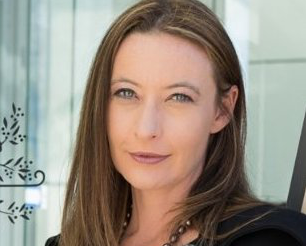Australia will not achieve the goal of eradicating hepatitis C without further action to ensure patients are identified and treated.
Speaking with PharmaDispatch following her appointment as president of Hepatitis Australia, Felicity McNeill PSM, said so much positive work has been done, with thousands of people cured, but all stakeholders must come together to address the fact treatment rates are in decline.
The latest data from the Department of Human Services shows monthly uptake of the direct acting antiviral cures for hepatitis C has more than halved since hitting a peak in June 2016.
Uptake of the therapies soared in the months after they were listed on the PBS in March 2016 as thousands of patients 'warehoused' in advance of their reimbursement accessed treatment. However, while the Kirby Institute estimates around 36,000 patients were initiated on treatment in the first year, that number will be substantially lower in the second year.
Approximately 55,000 patients are expected to be treated in the first two years, leaving around 200,000 Australians still infected with the deadly virus, with thousands of new infections every year.
According to Ms McNeill, the decline in treatment is "worrying" and suggests a number of potential issues, ranging from low consumer awareness to stigma, complacency and even challenges with diagnosis and access.
"Nobody would think access could be an issue, given they are funded through the PBS, and so much work has been done by so many to ensure tens of thousands of Australians have been cured. Primary care is now key to achieving the goal of eradication," she said, adding success in hepatitis C is essential because of the emerging new therapies for hepatitis B.
"This is more than a trial run for hepatitis B but it can be the model used when the new therapies emerge from company pipelines."
Ms McNeill hardly requires any introduction to the pharmaceutical sector, having spent almost five years heading the Department of Health's Pharmaceutical Benefits Division, a role for which she was recognised with the Public Service Medal (PSM) in the 2016 Australia Day Awards.
The new president of Hepatitis Australia spent two decades in the Australian public service, including senior roles in the Department of Finance and Department of Infrastructure and Regional Development in addition to the Department of Health, retiring after stints heading the Office of Health Protection and Organ and Tissue Authority.
On why she accepted the presidency of Hepatitis Australia, Ms McNeill reveals a passion for public health and ensuring the hard work of securing funding for the hepatitis C therapies delivers the intended outcome, telling PharmaDispatch the challenges faced by the tens of thousands of Australians living with the virus can not be underestimated.
Her PSM citation credits Ms McNeill for leading the development and implementation of reforms to price disclosure and the 2015 PBS Accessibility and Sustainability Package. It also emphasises the $6 billion in new listings during her tenure. The hepatitis C cures were actually recommended by the PBAC at the last meeting Ms McNeill attended as head of the Pharmaceutical Benefits Division.
Former health minister Sussan Ley announced the listings in December 2015, describing it as a "watershed moment", adding "...there is great hope we can not only halt the spread of this deadly infectious virus, but eradicate it altogether in time.”
"The key was the Section 85 listing, enabling GP prescribing, because eradication simply is not possible unless the majority of patients are accessing these cures through primary care," said Ms McNeill.
"We need to be treating enough patients, 30,000 to 40,000 every year, to break the back of this virus given there are still thousands of new infections every year. Patients are being treated, but not in the numbers required, and the gap in primary care is a big part of the issue.
"There are not enough specialists to treat that many patients every year so, without the vast majority being treated by a GP in the context of high uptake, we will manage the virus and reduce the number of Australians living with it, but it is unlikely to lead to eradication.
“So many people have done so much, including government, clinicians, consumer advocates and industry, and now there is an opportunity for groups like the primary health networks and those that support our prison systems, our indigenous and CALD [culturally and linguistically diverse] communities, to play an even more significant role in ensuring we achieve eradication.
"Eradication has to be the goal, the only goal, but we have to get the settings right and that means doing what needs to be done to get people living with the virus whatever their circumstance or location diagnosed and treated. It requires a constant effort.
"A higher proportion of prescribing is now coming through GPs but that could be bit of an illusion because it is set against the backdrop of a halving of the uptake - GP prescribing may not actually be significantly higher because overall treatment rates are well down; they simply have a higher proportion of a lower number.
"We have to remember just what a terrible disease this is and why eradication is so important - it kills people, slowly, firstly by impacting their personal relationships and ability to work, ultimately leading to liver disease and unfortunately death for hundreds of Australians every year. It imposes a terrible cost on people, their families, the health system and the wider economy."
Ms McNeill says government can do more to raise community awareness, help address the stigma, get people living with the virus diagnosed and treated, and ensure prescribers see diagnosis and treatment of both Hepatitis C and B as core to their work in looking after their community.
"This was always more than just a PBS listing, the companies, patient groups and clinicians knew it, the TGA and PBAC knew, the Department of Health knew, the minister and her Cabinet colleagues knew - it was a massive national public health initiative underpinned by access to some incredibly innovative medicines.
“As a country, we made these medicines universally available because it was the only way we could hope to make this cure possible for the 200,000 plus people we knew were already living with this disease – why have we not been able to reach them? We need to refocus our efforts on approaching this as a public health issue for all in our community, with access to diagnosis, treatment and follow up care and education. Failing to get this right over the next few years will not only be costly to those with the disease, it will be costly to government
“The budgeted investment in these medicines clearly confirms government's commitment to eradication, and there is no question about the commitment of industry, clinicians and community groups, so I think as we look ahead to the next few years everyone will be focussed on coming together and doing what needs to be done to meet the goal of eradication."

